Type 26 Anti-Infantry Pillbox and Anti-Tank Obstacles, near Hammerpond Hill Bridge, Mannings Heath

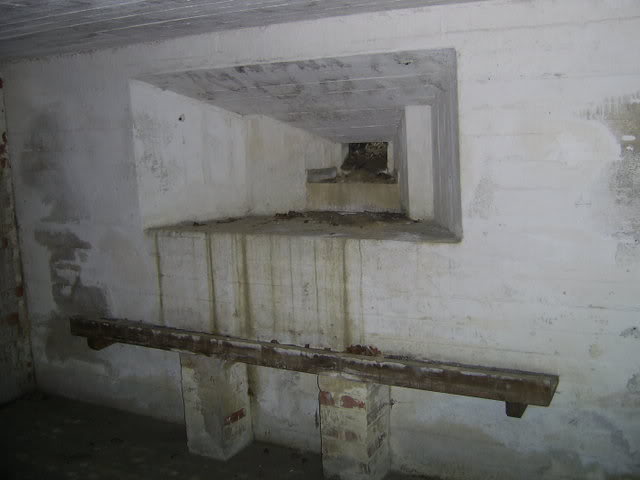

A raised, earthed up type 26 situated beside Mannings Heath Golf Club on the bank of the Goldings Stream, below Hammerpond Hill Bridge. On the road nearby is a single anti-tank coffin, cut down to ground level, visible as a protruding piece of concrete on the N. side of the road and there are two cone-shaped cylinders lying in the stream south of the bridge. (03/04/07)
Type 24 Anti-Infantry Pillbox, near Goldings Hill Bridge, Mannings Heath
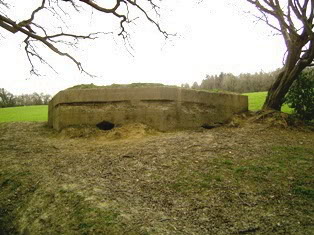
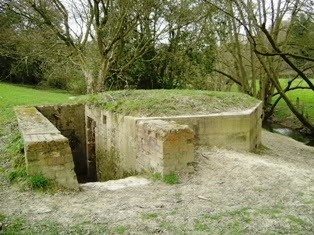
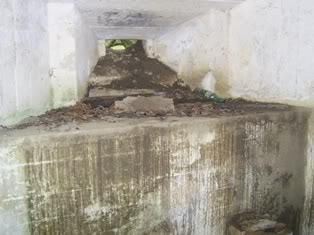
A rather decayed sunken type 24 built of reinforced concrete and brick, covering a road bridge. (03/04/07)
Type 24 Anti-Infantry Pillbox, near Whites Bridge, Horsham


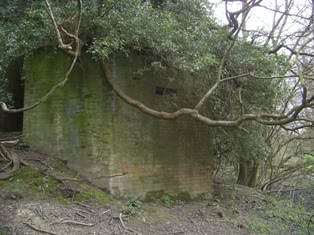
A typical type 24 set into the steep bank facing south to cover the road bridge, among woods and somewhat overgrown. (03/04/07)
Anti-Tank Obstacles, Chesworth Lane, Horsham
Six anti-tank 'pimples' located to prevent access to the town via the bridge on Chesworth lane. (17/02/05)
Type 28 Anti-Tank Gun Emplacement, Chesworth Lane, Horsham
Because of its location in a private garden I could not visit this pillbox, but it is somewhere on north bank of the River Arun. (n/a)
Anti-Tank Obstacles, Denne Road, Horsham



A collection of nine anti-tank cylinders which barred access to the town via a bridge over the River Arun. These would have been stored by the roadside and rolled into position then held with pegs in pre-drilled holes. In 2001 all of them stood in a line at the side of the road. In 2004 however, two were lying in the river, one was in an adjacent water meadow and the other six were outside the entrance to Denne Park. The cylinders have been removed (2009) and are now in storage. Photos 2 & 3 (c.2001) and status update kindly provided by Mrs Margaret Thompson.
(18/11/04)
Anti-Tank Obstacles, The Causeway, Horsham
All that remains of the pyramid-shaped 'pimple' type obstacles is a group of concrete squares in the pavement. A town trail notice marks the site. (02/12/04)
Type 28 Anti-Tank Gun Emplpacement, near Mill Bay Bridge, Horsham
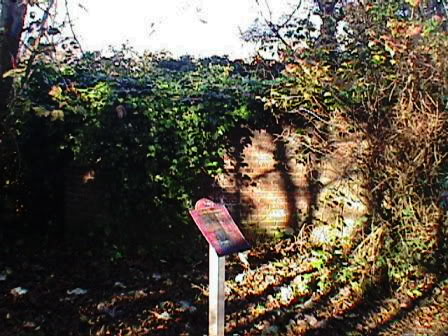
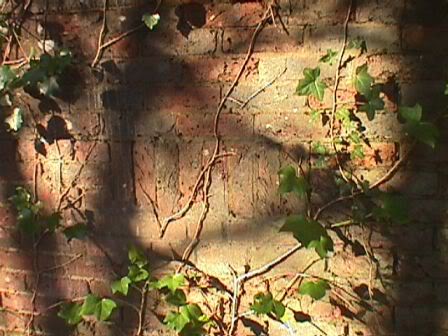

Designed for a 6pdr. gun, this box defends a road bridge over the River Arun. The door and embrasures have been bricked up for reasons of public safety. The line of vertical bricks on the second photo replaces an
embrasure. It bears a town trail plaque giving a brief history. Type 28 Plan after Longstaff-Tyrell, 1998. (19/11/04)
Type 24 Anti-Infantry Pillbox, near Hills Farm Lane, Horsham



This isolated pillbox stands between the River Arun and Tanbridge New School and covers a farm bridge over the River Arun. It is surrounded by rubbish and old chairs left by school children. Type 24 plan after Longstaff-Tyrell, 1998
Anti-Tank Coffin, Floodgates Bridge, Broadbridge Heath

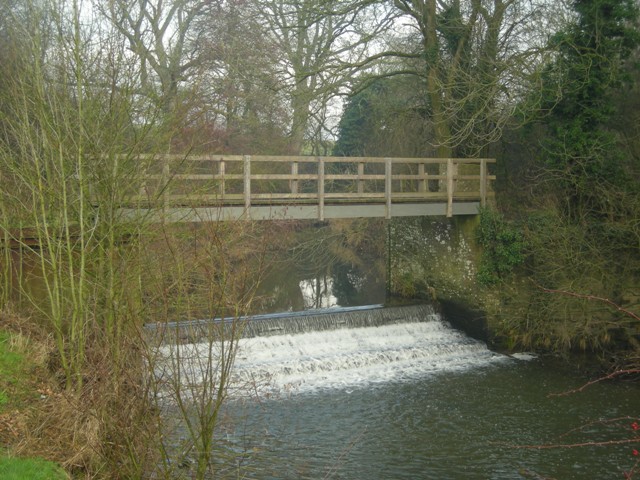
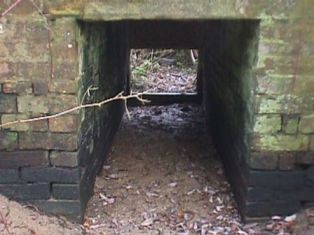
This single obstacle stood at the end of a small access bridge which was demolished post-war and replaced by a footbridge (pictured). A house, occupied by the sluice keeper for the nearby Broadbridge Mill stood on the far bank and was demolished at the same time (sluice gate pictured).
(4/12/04)
Type 24 Anti-Infantry Pillbox, High Woods, Broadbridge Heath

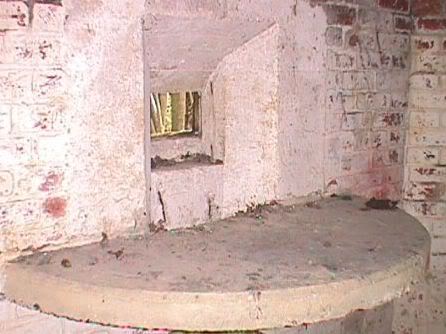

This type 24 pillbox, set into a steep bank defending a river crossing point is
interesting in that inside the embrasures open out onto semicircular shelves, probably for light machine guns mounted on tripods. Until recently
the box was in a bad state. In Autumn 2005 the interior was excavated before the site was fenced around by the landowner. (08/01/04), (12/10/05) & (07/05/06)
Type 28 Anti-Tank Gun Emplacement, Wickhurst Lane, Broadbridge Heath
.JPG)


This gun emplacement stands to the south of Broadbridge Farmhouse and though originally well hidden by overgrowth, appears to be in fair condition. It is now used as a garden shed and has recently been cleared of overgrowth.
(04/10/04, 20/11/04, 29/3/07 & 28/7/07)
Anti-Tank Coffins, Mill Bridge, Broadbridge Heath
Two huge upturned concrete anti-tank 'coffins'or 'dragons teeth' with a slot for a barrier to prevent access to
Broadbridge Heath via the Mill Bridge
over the River Arun. (11/11/04 & 20/11/04)
Type 28a Anti-Tank Gun Emplacement, near New Bridge, Broadbridge Heath



This rectangular pillbox was built to cover the nearby road bridge over the River Arun using 6pdr. and Bren light machine guns but is now in poor condition. As well as being heavily overgrown, part of the blast wall has been demolished and someone seems to have decided that the interior would benefit from a coat of cream and green emulsion paint. (12/03/04 & 20/11/04)
Anti-Tank Coffin, Slinfold Mill Bridge, Broadbridge Heath


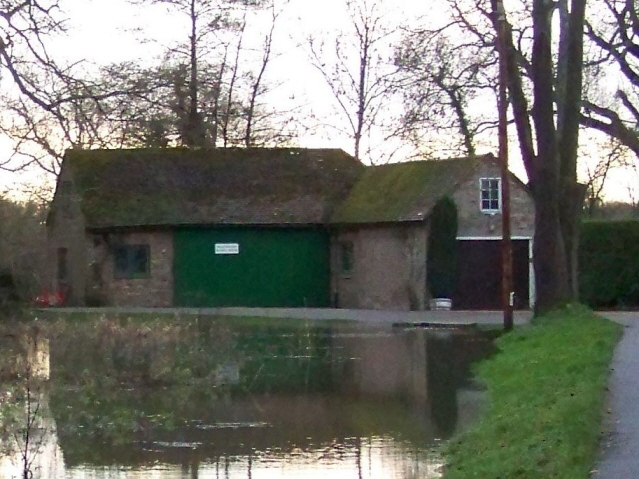
Attempts in 1989 and 1996 to rediscover this roadblock were unsuccessful, because, as it turned out,
both the Surrey Industrial Society and the Council for British Archaeology were looking in the wrong place.
A careful search of the area reveals that the road has moved since the war (probably because of the obstacles
in the way) and the roadblock is to be found on the remains of the old bridge. The mill itself (pictured) was converted into a private garage in the 1930s.
(6/05/06 & 29/03/07)
Type 24 Anti-Infantry Pillbox, near Rapkyns Farm, Strood Green, Slinfold

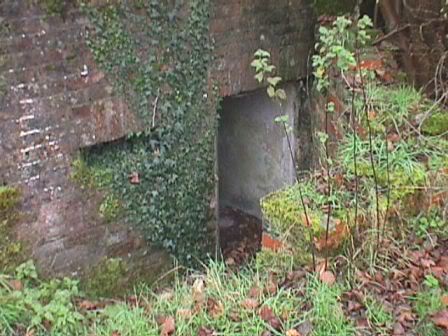
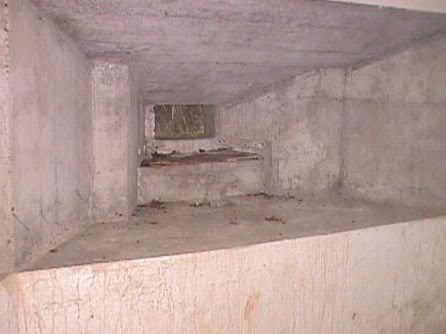
This pillbox faces south to cover a farm crossing over the River Arun. It is partially buried
but access is not difficult and the condition is very good.
(04/04/04 & 03/12/04)
Type 22 Anti-Infantry Pillbox, near Rowfold Farm, Slinfold

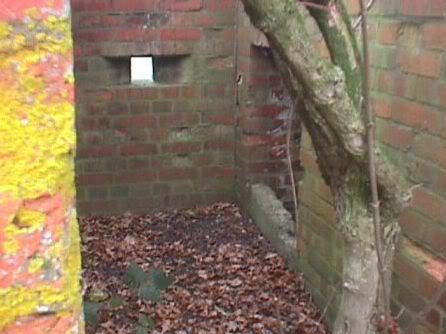

This pillbox was built to cover a farm bridge over the River Arun and is in good condition, the roof retains its camouflage of soil and grass, and inside the wooden shutters remain in-situ. In addition to the roof camouflague, the box was built under an oak tree to evade aerial detection.
Type 22 Plan after Longstaff-Tyrell, 1998.
(03/12/04)
Type 28 Anti-Tank Gun Emplacement, Roman Woods, Slinfold


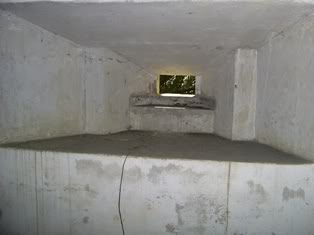
This type 28 pillbox is passed at high speed by hundreds of people every week without their realising it.
Built to cover Alfoldean Bridge on the Arun, it stands beside the busy A281 hidden in undergrowth.
(05/08/06)
Variant Anti-Infantry Pillbox, near Dedisham Farm, Slinfold
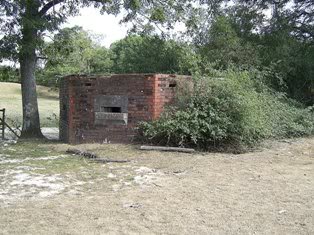

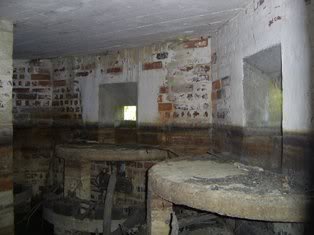
This unusual pillbox is identical to a Type 24 in all but one respect: entry is by means of a raised brick shaft which is
entered using a fixed iron ladder and opens out into the door.
The reason for this unusual arrangement was apparently to prevent flooding, the box having been built on a floodplain.
Ironically, the waterproofing proved so effective that the pillbox is now filled with rainwater to a
depth of between one and four and a half feet depending on the weather.
I visited in a period of drought, but even so the water was about a foot deep and very stagnant. (07/08/06 & 08/08/06)
The nearest of these lines to my home town of Horsham was the Arun Divisional Line, which as its name suggests ran along the River Arun south of Horsham with pillboxes spaced at approximate half-mile intervals. Defences were usually concentrated on main roads, railways, river crossings and nodal points - strategic towns and villages of which Horsham was one.
In 2004, I began a project to visit and photograph all of the surviving defences on a six mile section of the line between Chesworth and Dedisham. The scope of the project was extended to cover the Chesworth - Hammerpond Hill section in Easter 2007, and the project was completed later that year.
In the event, the defences would have been manned by the Home Guard or Local Defence Volunteers, a force made up of men who were ineligible for military service due to their age or reserved occupation. Although this strategy would probably have been an effective one, arresting the invaders' progress before the capital was reached, the prospects for these volunteers were still bleak: even if successful they would be outmanned and outgunned and as such could expect heavy losses.
Bibliography
Tyrell's List - the artefacts of two great wars in Sussex
Peter Longstaff-Tyrrell, Gotehouse Publishing, 1998. -
CBA Defence of Britain Database.